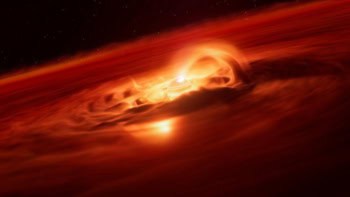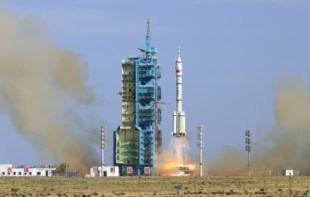
The laser altimeter for Europe’s first mission to Mercury has been fitted to the Mercury Planetary Orbiter (MPO). Developed by a European team led by the University of Bern in Switzerland, the BepiColombo Laser Altimeter (BELA) is part of the European Space Agency’s BepiColombo mission to Mercury, which is due to launch in April 2018. It’s the first laser altimeter for inter-planetary flight to be built in Europe.
Coupled system
The instrument will measure the topography of Mercury from aboard the MPO, which is one of two spacecraft that will orbit the planet as part of the BepiColombo mission. The MPO is being built by ESA, while the Mercury Magnetospheric Orbiter (MMO) is being built by the Japan Aerospace Exploration Agency (JAXA).
The aim of the BepiColombo mission – Europe’s first to Mercury – is to provide information on the composition, geophysics, atmosphere, magnetosphere and history of Mercury. The two spacecraft will travel to Mercury as part of a coupled system. When they reach Mercury in 2024, the MMO will study the planet’s magnetosphere via an orbit such that it will be 590 km from Mercury’s surface at its closest approach, while the MPO will follow a closer orbit at 480 km and survey the planet’s surface and internal composition.
BELA is one of 11 instruments that will be carried on the MPO. The laser altimeter uses the direct-detection approach. A high-power laser, which was developed by Cassidian Optroniks, a subsidiary of Airbus Defence and Space, based in Germany, will emit 50 mJ pulses with a wavelength of 1064 nm at a frequency of 10 Hz. These will be reflected back from the surface of Mercury and received around 5 ms later by the receiver telescope (RTL). The image is then refocused onto silicon-based avalanche photodiodes – these are based on the photodiodes used on the laser altimeters on NASA’s Mars Global Surveyor spacecraft and MESSENGER spacecraft, which orbited Mercury between 2011 and 2015. The signal from the photodiode is then analysed by an electronics module developed by Swiss technology company RUAG, to determine the time of flight (and therefore range and altitude), the integrated pulse intensity, and its width.
Mirror mirror
The RTL is a two-mirror telescope that was designed and developed by RUAG. Located inside the spacecraft, it needs to cope with temperature ranging from –20 °C to +45 °C without deforming, but also needs to be lightweight. “We decided to build the telescope entirely from beryllium to provide thermal compensation,” says Nicolas Thomas, BELA co-principal investigator, based at the University of Bern. “The 20 cm-diameter system weighs only 600 grams.” The optical surface was produce by diamond-machining copper deposited on the beryllium.
Due to Mercury’s proximity to the Sun, BELA will have to deal with intense heat and sunlight. The RTL is protected by a “baffle unit” that reflects 90% of sunlight striking it. “If we had had a traditional black baffle, not only would it have reached 450 °C, but we would have injected more than 300 W of heat into the spacecraft,” explains Thomas. “The outer (ceramic) ring still reaches 200 °C worst case but the 30 W we now dump to the spacecraft can be handled.” The laser is also protected by a similar but smaller unit developed by the German Aerospace Center, DLR, in Berlin.
Feel the heat
To deal with sunlight reflected from Mercury, both the optics system, which transfers light from the telescope to the photodiodes, and the laser are fitted with interference filters. The filter for the optics system isolates light at a laser wavelength of 1064 nm, while the filter for the laser prevents potentially dangerous light levels reaching the system.
“BELA will contribute a lot to understanding Mercury,” says Thomas, who adds that “Einstein’s studies of the motion of Mercury have been so important to the theory of general relativity. It is nice to think that with this instrument, the University of Bern, where he used to work, can play a leading role in studying this particular planet in detail.”



